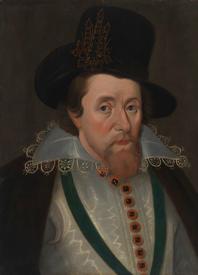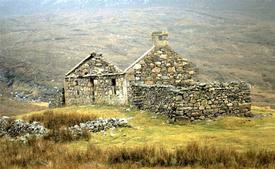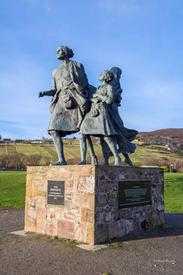Scotland and England. England and Scotland. Two ‘auld’ enemies with a history of fighting, joined together by an accident of geography and a political act of Union. The Union has undoubtedly had its successes and benefitted both nations, but to watch Nicola Sturgeon and co. in 2021 is to be reminded that it has been an uneasy Union, particularly for the Scots, some of whom view their southern neighbours with an inherent suspicion.
There are some English people who appear mystified, even scornful, about the suspicion in which they are held north of the border. Okay, so maybe we did some bad things to you. But that was a long time ago. Water under the bridge and all that, right?
Well, that doesn’t seem to cut it for a lot of Scots. England hasn’t been an easy neighbour to have, and some non-English Brits struggle to see past its history as the big bully around the British Isles, ruthlessly attempting to subjugate and control the Celtic parts of the islands, including Scotland. There are caveats to this, of course; the Scots haven’t always been saints themselves, the Union has brought great benefits, and the 21st century is a vastly different time to the centuries gone by when violent border clashes were common.
Boris Johnson may not be about to gather an army from the English shires to march up to Berwick and meet Clan Sturgeon, but the dynamic of England being the bully that dismisses its smaller neighbour, and its culture and traditions, remains a key rallying point for Scottish nationalists. Incidentally, it seems that Mr Johnson himself is problematic for them, representing a version of Englishness that they find particularly unappealing.
I don’t want to spend this piece cataloguing the whole history of English-Scottish violence. Instead, I wanted to focus on one episode in particular, and link it to the current debate about the Union and Scotland’s place in it. That episode is perhaps not so well known (at least not in England), but is truly one of the darkest chapters in English-Scottish relations. I’m not talking about a war per se, but rather about a systemic attempt to disrupt and uproot traditional Scottish culture and ways of life. I’m talking about the Highland clearances.
Background
I should perhaps say at the outset that I may be English born and raised, but have a grandfather who hailed from the small highland village of Helmsdale. I have spent time there and seen monuments dedicated to the victims of the clearances; indeed, it was those monuments that encouraged me to look into the topic when I was younger. You can now accuse me of being biased, or not biased enough, as you see fit.
The clearances themselves started in the middle of the 18th century, but the story as I shall tell it really begins in 1603, when James VI of Scotland became James I of England upon the death of Queen Elizabeth I. In many ways, this was the most important point in the road to Union; ruled by the same King, England and Scotland were now inextricably linked.
James I & VI attempted to form a United Kingdom (national portrait gallery)
Although it was King James who first floated the idea of a United Kingdom, he only returned to his homeland once after 1603, leaving the Scots with a sense that they were being ruled by a distant, foreign, entity.
What also mattered was that James was a King who prized loyalty to himself above all other loyalties. Just as this made his attitude to Catholics slightly ambiguous (even after the Gunpowder Plot, he wasn’t so concerned about people’s religious loyalties, so long as their political loyalty lay with him), so it made him suspicious about clan culture in northern Scotland. As told by Terry Stewart for Historic UK, James was uncomfortable with the idea that some of his subjects may have more loyalty to their clan leaders than to him, so he tactically shifted said leaders to different parts of his two kingdoms on ‘royal duties’, so that their people barely saw them. This only served to further alienate the Scots, and highlanders in particular, from their new government in London.
Despite the Scottish King’s apparent disregard for his compatriots after heading south, people in Scotland broadly stayed loyal to James and his Stuart descendants. This remained true during the English Civil War in the 1640s, but the so-called ‘Glorious Revolution’ of 1688-89 divided Scotland over the question of supporting the Stuarts. When James II of England (James VII of Scotland, James I & VI’s grandson) was deposed from the throne and replaced by his daughter, Mary, and her husband, William of Orange, there were some Scots who welcomed the change and the preserving of Protestantism as the dominant religion on these isles. But many Scots, particularly in the north and highlands, opposed the change. Reasons for this opposition varied; some were wary of the increasing English religious influence on Scotland, others rejected the deposing of the King out of principle, while others still simply saw a chance to dissolve the proto-Union between England and Scotland. Whatever their reasons, by 1700 there was significant opposition to the London government, and support for the exiled Stuart dynasty, in the north of Scotland. The countdown to conflict had begun.
The official Act of Union in 1707 only further exacerbated this. It is possible that the United Kingdom would have formed even if James II & VII had not been deposed, but as it was the Union came to be seen in the highlands as an unpopular act, enforced by an illegitimate crown. When James’ son was overlooked in the succession upon the death of Queen Anne in 1714, and Britain came under the rule of the House of Hannover, the clans of the north of Scotland took up the cause of King James’ descendants.
This manifested itself most famously with Charles Edward Stuart – better known as Bonnie Prince Charlie. The grandson of James II & VII, he arrived on Scottish shores in 1745 and many highlanders rallied behind him. They had initial success, but their rebellion was ended by the British army at the Battle of Culloden in April 1746. The Bonnie Prince fled for his life, surviving highlanders returned to their homes, and the London government considered what it could do to crush any residual opposition once and for all.
Eliminating Ancient Traditions
The British government had taken quite a dim view of highland support for the rebellion. But why, they asked themselves, had the rebellion won so much support in the highlands, as opposed to southern parts of Scotland?
They arrived at the conclusion that it was because they had not been anglicised enough; that the people in question would never make their peace with the Union if they clung to their Gaelic traditions. While southern Scotland was more ‘English’ and at ease with its place in the Union by this point, in the north and highlands there still existed an ancient Celtic culture, rooted in clan loyalties and the Gaelic language.
Would the British government try and gradually phase this Gaelic culture out? Of course not. Far better, they decided, to stamp it out as quickly as possible. The 1747 Act of Proscription banned a multitude of Gaelic traditions, from teaching the language, to playing the bagpipes, even the wearing of tartan.
These oppressive laws were accompanied by an oppressive economic regime. Landowners in the highlands realised that the people living there were not producing any money for them; at least, not as much money as the local sheep. To make room for sheep to supply the booming wool trade, landowners systemically forced local people, whose families had been living in these parts of Scotland for centuries, to leave.
It is perhaps important to note that the clearances were not always driven by violence, nor solely by the English. The landowners who forced local people from their homes included lowland Scots as well as Englishmen, and the suffering they inflicted on these people was not necessarily by design, but by sheer indifference to their plight. These highlanders were simply seen as inferior, their lives worse less than those of their masters and of the sheep who could produce lucrative amounts of wool. If these people lost their way of life and everything they held dear, if some of them starved, then so be it. Business was business, and the backward highlanders were getting in the way of it.
The clearances can generally be said to have happened in two phases. In the first phase, from around 1750-1815, traditional communities in the central highlands were cleared to make way for sheep farms. The people who had lived here were either offered smaller farms called ‘crofts’, offered shared farms in coastal areas, or were expected to find employment in the fishing industry.
The second phase was harsher. As the European economy changed after the Battle of Waterloo, wool prices plummeted and landlords became more desperate in their bid to make room for more sheep, attempting to cover for their losses by sheer volume. People were more forcefully ejected from their homes, and crofting cottages were burned down to ensure they were abandoned and not returned to. A potato famine in the 1840s only made matters worse, and just as in Ireland the famine turned into a humanitarian disaster through the incompetence and indifference of English rulers, so it was in the highlands.
In slightly kinder cases, landlords paid for highland families to emigrate to north America or Australia. Even so, the clearances remained vicious, cruel, and disastrous for hundreds of thousands of people.
What do the clearances mean to us today?
In one sense, the clearances had their desired effect – at the dawn of the 18th century, around a third of Scotland’s population lived in the highlands. By the end of the 19th century, that had reduced to under 15%. Some Highlanders drifted south, towards Glasgow, Edinburgh or England, while others headed to Australia or North America. The ones who stayed became more identifiably British, fighting for the British army across the world (they were permitted to wear tartan again in such battles). Indeed, my own highland ancestors served in the Royal Navy in the first and second world wars, perhaps as an indirect consequence of their ancestors being shifted from the mountains to the small coastal fishing villages.
And yet the callous nature of the clearances means that they not only cannot be forgotten, but can also be said to have harmed the Union in the long term.
I did not choose to focus on the clearances because it was the most violent episode in English-Scottish relations – plainly, it wasn’t. Rather, I chose to focus on it because the background to it shows that there has long been an anti-Union tradition in Scotland, and because I think the attitude of the landowners in this period can be linked to the suspicion in which England is held by many Scots, even in the modern day.
It is not even the cruelty of the landowners that is their most important legacy. More crucial is how they were dismissive of highland traditions, uninterested in centuries-old cultures, indifferent to the people they found themselves ruling over. They did not understand the northern Scots, and nor did they want to understand them.
There is a definite link, I believe, between this dynamic and the dynamic that modern Scottish nationalists paint. There are, of course, many reasons to pursue independence that have nothing to do with England, but it is undeniable that Scotland's relationship with England is one of, if not the, key rallying point for Scottish nationalists. Their narrative expands the ranks of the oppressed to all of Scotland, rather than just the highlands, but England remains the oppressor.
Perhaps there is also something to be said for the fact that the story of the clearances isn’t as black and white as it seems. No doubt it was driven by English landowners, but many of the landowners who forced people from their homes were Scots themselves. Call me a bitter Englishman, but it seems to me that Scottish Nationalists rather cling to a simplistic ‘England bad, Scotland good,’ narrative. History shows that this is not always the case.
It seems likelier now than ever that Scotland will leave the Union. Some English people will react with fury and confusion, some (such as this writer) would be heartbroken, while the more perceptive will understand why it has happened. But many English people will simply shrug and conclude that they didn’t much care about Scotland anyway. In many ways, that’s exactly the point.
The memorial to displaced Highlanders in Helmsdale, north-east Scotland - birthplace of this writer's grandfather (pinterest)
Like this article? Explore the blog for more great content, and DONATE HERE! The blog needs your help to keep going!
https://www.buymeacoffee.com/tomMOH
Acknowledgements
The Ministry of History is not an academic source. Our writers have read widely and are influenced by many books, journals and articles. For this piece in particular, a key reference has been:
'The Highland Clearances', article by Terry Stewart for Historic UK
https://www.historic-uk.com/HistoryUK/HistoryofScotland/The-Highland-Clearances/

.jpg)


